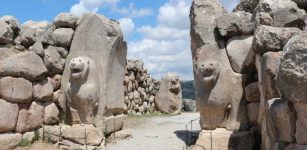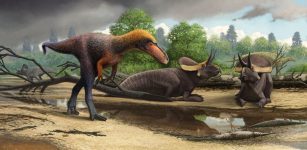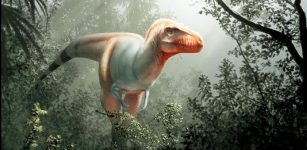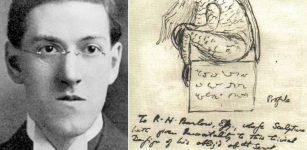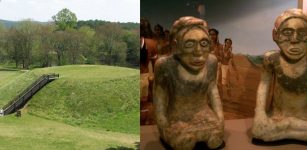Completely Unknown Giant Organism Discovered In Cincinnati Baffles Scientists
MessageToEagle.com – It’s a completely new discovery! Never before has such an unusual and mysterious creature been discovered anywhere.
Experts say it seems to defy all known groups of organisms and descriptions, pictures of it, leave people with more questions than answers.
There is no doubt we are dealing with a biological creature, scientists say. When it lived it was gigantic and it stood upright.
Around 450 million years ago, shallow seas covered the Cincinnati region and harbored one very large and now very mysterious organism.
Despite its size, no one has ever found a fossil of this “monster” until its discovery by Ron Fine of Dayton, an amateur paleontologist last year.
For more than 200 years, the rocks of the Cincinnati region have been among the most studied in all of paleontology, and the discovery of an unknown, and large, fossil has professional paleontologists scratching their heads.
“I knew right away that I had found an unusual fossil,” Fine said.
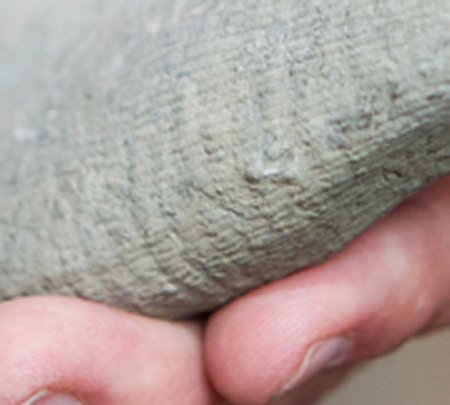
“Imagine a saguaro cactus with flattened branches and horizontal stripes in place of the usual vertical stripes. That’s the best description I can give.”
The layer of rock in which he found the specimen near Covington, Kentucky, is known to produce a lot of nodules or concretions in a soft, clay-rich rock known as shale.
“While those nodules can take on some fascinating, sculpted forms, I could tell instantly that this was not one of them,” Fine said.
“There was an ‘organic’ form to these shapes. They were streamlined.”
Fine was reminded of streamlined shapes of coral, sponges and seaweed as a result of growing in the presence of water currents.
“And then there was that surface texture,” Fine said. “Nodules do not have surface texture. They’re smooth. This fossil had an unusual texture on the entire surface.”
“It’s definitely a new discovery,” Meyer said. “And we’re sure it’s biological. We just don’t know yet exactly what it is.”
To answer that key question, Carlton E. Brett and David L. Meyer of the University of Cincinnati geology department, and Benjamin Dattilo of the Indiana University Purdue University Fort Wayne geosciences faculty worked with Fine to reconstruct a timeline working backward from the fossil, through its preservation, burial, and death to its possible mode of life.
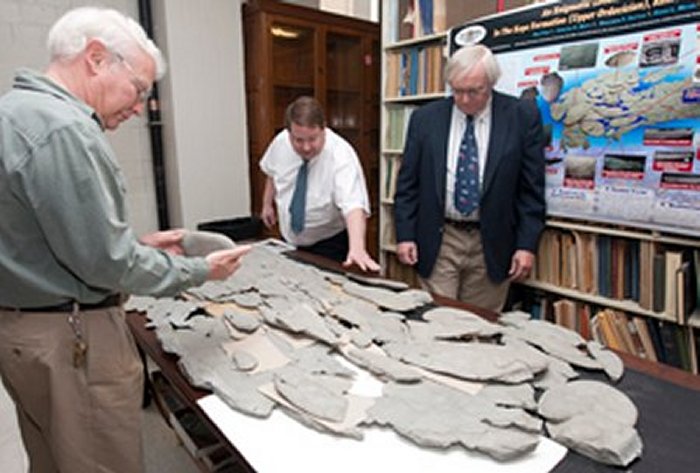
“What things had to happen in what order?” Meyer asked. “Something caused a directional pattern. How did that work? Was it there originally or is it post-mortem? What was the burial event? How did the sediment get inside? Those are the kinds of questions we have.”
It has helped, Meyer said, that Fine has painstakingly reassembled the entire fossil. This is a daunting task, since the large specimen is in hundreds of pieces.
“I’ve been fossil collecting for 39 years and never had a need to excavate. But this fossil just kept going, and going, and going,” Fine said. “I had to make 12 trips, over the course of the summer, to excavate more material before I finally found the end of it.”
See also:
A Teaspoon Of Soil Contains More Living Organisms Than There Are People On Earth
Even then he still had to guess as to the full size, because it required countless hours of cleaning and reconstruction to put it all back together.
“When I finally finished it was three-and-a-half feet wide and six-and-a-half feet long,” Fine said.
“In a world of thumb-sized fossils that’s gigantic!”
Meyer, co-author of A Sea without Fish: Life in the Ordovician Sea of the Cincinnati Region, agreed that it might be the largest fossil recovered from the Cincinnati area.
“My personal theory is that it stood upright, with branches reaching out in all directions similar to a shrub,” Fine said. “If I am right, then the upper-most branch would have towered nine feet high. ”
Although the team has reached out to other specialists, no one has been able to find any evidence of anything similar having been found.
In the meantime, the team is playing around with potential names. They are leaning toward “Godzillus.”
MessageToEagle.com based on material provided by University of Cincinnati

